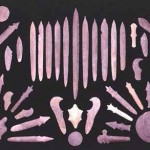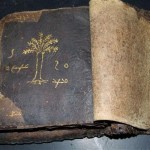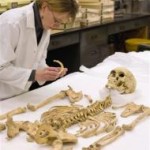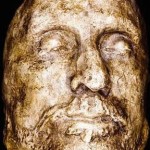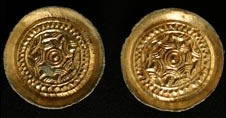The Frank H. McClung Museum is associated with the University of Tennessee at Knoxville, and is a fantastic repository of Tennessee history, from building materials (handmade bricks and Tennessee quartzite) to a world-class permanent collection of Native American artifacts excavated in the 30’s before the area was flooded to create reservoirs.
From 1934 to 1942, ten reservoirs were constructed on the Tennessee River and its tributaries, and archaeological work was conducted in nine of them. Hundreds of sites were recorded and excavations exposed over 1.5 million square feet of prehistoric and historic Native American occupations.
The results of these massive investigations, along with subsequent work in other reservoirs such as Nickajack, Tims Ford, Barkley, Melton Hill, and Tellico, are housed at the Frank H. McClung Museum. Millions of artifacts — along with the associated fieldnotes, forms, analysis sheets, drawings, photographs, and correspondence — comprise a research base for southeastern Indian studies of international significance.
A vast collection of millions of ancient Native American artifacts all of which are clearly documented with the documentation available for research is a rare thing in the museum world, needless to say. Maybe unique.
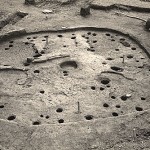 They’ve even digitized the photography collection, so you can see the New Deal at work preserving ancient history.
They’ve even digitized the photography collection, so you can see the New Deal at work preserving ancient history.
The permanent collection, Archaeology and the Native Peoples of Tennessee, sounds neatly designed too.
The exhibit occupies 3,200 square feet on the main floor of the Museum. Visitors enter from the lobby through an introductory walkway where a large topographic map of Tennessee reveals through fiberoptic lights the many excavated sites that form the database for the story about to be told. Two short videos explain the science of archaeology and summarize the history of archaeology in the State. […]
Within each of the five cultural areas are exhibit cases and displays that combine artifacts and images to present the changing lifeways of the Native Peoples and address the topics of society, technology, biology, subsistence, trade, ritual and art. Pull-out study drawers permit the visitor to learn more about specific kinds of artifacts, such as projectile points, pipes, pottery, trade beads, and other topics, including plant domestication, mound building, and cave art.
Pull-out study drawers. Ah am een lohve. :love:
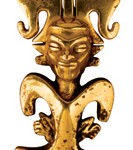 I stumbled on this museum because they’re currently hosting what seems to be a gorgeous visiting exhibit called River of Gold: Precolumbian Treasures from Sitio Conte.
I stumbled on this museum because they’re currently hosting what seems to be a gorgeous visiting exhibit called River of Gold: Precolumbian Treasures from Sitio Conte.
The artifacts are the products of the University of Pennsylvania’s excavations of Precolumbian burials at the Sitio Conte site in Panama in the 1940’s.
The exhibition includes 123 exquisite pieces of Precolumbian Panamanian goldwork ca. from A.D. 700-1100—embossed plaques, nose ornaments, gold-sheathed ear rods, pendants cast by the lost-wax method, bells, and beads—as well as polychrome ceramics and objects made of precious and semi-precious stones, whale-tooth ivory, and bone.
Shiny! Also — and here’s the best part — it’s all free. Admittance to the museum and all its exhibits is 100% free and gratis. Makes me want to send them a donation right now.
P.S. – They’ve also digitized their collection of early photography of Egypt. If you don’t hear from me for a few days, that’s where I’ll be.
